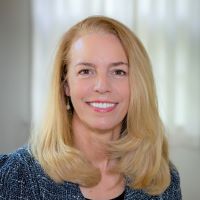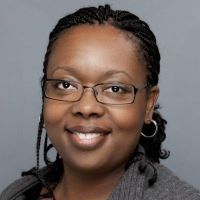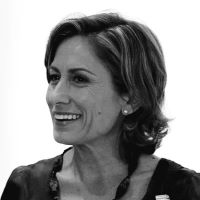Part 1: Women in Design
In celebration of International Women’s Day on March 8, and this year’s theme #ChooseToChallenge, we have asked a diverse group of leaders and employees to write about their experiences in challenging the status quo and strengthening gender equity and inclusion in the workplace. From March 1 through March 8, follow this conversation on our blog and across our social media handles (Twitter, LinkedIn and Facebook).
In a two-part blog series, we are sharing the perspectives of women across our industry, gaining insight from architects, interior designers, urban designers, planners and strategists – women in design at AECOM. How can we work to forge gender quality in the design profession? Where do they find inspiration? How are we contributing to diversity and inclusion through our work? Read the first story below.
Suzanne Klein, Associate Vice President, Higher Education Market, Buildings + Places Arlington Studio
 Why I chose the design profession: As a child, I had two ‘career potential’ passions: animals and creating things. Since I am allergic to cats and faint at the sight of blood, becoming a veterinarian was not going to happen. My interest in architecture began at age 12 when my parents purchased a historic, but dilapidated country farmhouse in Chester County, Pennsylvania. An architectural career was a natural fit for me because it combined my artistic propensities with my growing interest in art, architectural history, gardens and landscapes.
Why I chose the design profession: As a child, I had two ‘career potential’ passions: animals and creating things. Since I am allergic to cats and faint at the sight of blood, becoming a veterinarian was not going to happen. My interest in architecture began at age 12 when my parents purchased a historic, but dilapidated country farmhouse in Chester County, Pennsylvania. An architectural career was a natural fit for me because it combined my artistic propensities with my growing interest in art, architectural history, gardens and landscapes.
How my work is contributing to diversity and inclusion in the design profession’s broader society: On college and university projects, it isn’t about getting input from one or two people, it is about developing collaboration from a variety of diverse stakeholders. Throughout the design process, the better representation from a variety of voices, the better the project will be.
Ways we can work to forge a gender equal world: Several things, and most of it comes from within. First, I encourage women to be confident in their abilities. Second, be brave and don’t let anyone deter you. Third, network like your career depends on it, because it will. With each step you make, it will be one step closer to equality for yourself and the next generation.
Danielle Maludy, Associate Project Manager, Buildings + Places Chicago Studio
 Why I chose the design profession: I fell in love with architecture at a young age – honestly, before I can even really remember. The aesthetics of buildings and the spaces they create always intrigued me but over time, I realized the real beauty I came to love was the impact those elements can have on a building’s occupants and the surrounding community.
Why I chose the design profession: I fell in love with architecture at a young age – honestly, before I can even really remember. The aesthetics of buildings and the spaces they create always intrigued me but over time, I realized the real beauty I came to love was the impact those elements can have on a building’s occupants and the surrounding community.
How my work is contributing to diversity and inclusion in the design profession’s broader society: As architects and designers, we have the ability to create buildings and spaces that help establish and support an inclusive environment at multiple scales. Although the buildings themselves may be the ultimate destination, thoughtful architecture and design has the ability to make an impact beyond the physical structure itself and becomes a mechanism to not only collect people, but stich and connect a diverse community.
Ways we can work to forge a gender equal world: For those in leadership positions – whether you are male or female – promote and praise your employees for their professional achievements and strengths, unbiased of gender. Beyond that, challenge the growth of your organization’s benchmarks for equality on all levels. A diverse design team means broader perspective on the projects we deliver which ultimately have a profound impact on the societies in which we live.
Katherine Chappelle, Senior Interior Designer, Michigan Studio
 Why I chose the design profession: Design chose me. I always had interest in the arts I thought writing would be my career path and entered Michigan State University as a Journalism/Communications Major. There I was, alone in a stressful new world and extremely home sick. After long days of absorbing my new courses, all I wanted was to come back to the comforts of my new home – my dorm room. Well, that wasn’t happening. My dorm room was an utterly depressing gray cell. There was no way I could spend the entire year in that space! I got creative. I rolled up my sleeves, determined to make lemonade out of lemons, and tweaked my space by adding color and life with temporary things like contact paper, wood structures, lighting and artwork, until I created a livable and enjoyable space for myself. It was a hit. Students from all over my hall heard about my room and knocked on my door to see. That was the moment I realized this is what I wanted to do. I liked the idea of transforming environments for the comfort and wellbeing of its occupants, even if the occupant was me. I became an interior design major and quickly learned there was much, much more to interior design than materiality. I learned about all the nuances of site planning, team coordination, etc. That’s where it started and throughout my studies, design continued to bring me joy. The rest is history.
Why I chose the design profession: Design chose me. I always had interest in the arts I thought writing would be my career path and entered Michigan State University as a Journalism/Communications Major. There I was, alone in a stressful new world and extremely home sick. After long days of absorbing my new courses, all I wanted was to come back to the comforts of my new home – my dorm room. Well, that wasn’t happening. My dorm room was an utterly depressing gray cell. There was no way I could spend the entire year in that space! I got creative. I rolled up my sleeves, determined to make lemonade out of lemons, and tweaked my space by adding color and life with temporary things like contact paper, wood structures, lighting and artwork, until I created a livable and enjoyable space for myself. It was a hit. Students from all over my hall heard about my room and knocked on my door to see. That was the moment I realized this is what I wanted to do. I liked the idea of transforming environments for the comfort and wellbeing of its occupants, even if the occupant was me. I became an interior design major and quickly learned there was much, much more to interior design than materiality. I learned about all the nuances of site planning, team coordination, etc. That’s where it started and throughout my studies, design continued to bring me joy. The rest is history.
How my work is contributing to diversity and inclusion in the design profession’s broader society: I am a Black Woman designer – rare in my industry. I have had great opportunities to work at top architectural firms, including AECOM, in both the United States and Europe. When I volunteer in my community, I share experiences, successes and challenges. The students I chat with and mentor get to see someone who looks like them. That’s important.
Ways we can work to forge a gender equal world: Put an end to the gender boxes. Put an end to the race boxes. Stop putting me in a box.
Yiran Wang, Landscape Architectural Designer, Buildings + Places Los Angeles Studio
 Why I chose the design profession: I was inspired by my grandparents, who are an architect and a civil engineer. Growing up with their tracing paper rolls and conceptual drawings, I became a person who enjoyed being creative more than anything else.
Why I chose the design profession: I was inspired by my grandparents, who are an architect and a civil engineer. Growing up with their tracing paper rolls and conceptual drawings, I became a person who enjoyed being creative more than anything else.
How my work is contributing to diversity and inclusion in the design profession’s broader society: We are designing this physical world. If the barriers inside of people’s mind are difficult to dissolve, at least let us try to build less barriers in their lives. As a landscape designer, it is our mission to do so – to bring people together; to bring nature and natural good back to life.
Ways we can work to forge a gender equal world: I once attended a meeting with all men and I was the only woman. The meeting host started with, “Hello, gentlemen”. It has been stuck in my head since and even now, I still regret that I did not speak up. Within our profession, we need to recognize amazing female leadership and have female voices heard in every possible field. When we work with others and the public, we need to remind ourselves to treat everyone equally with no bias or prejudice.
Elvira Munoz Beraza, Director, Interior Design, Buildings + Places Madrid Studio
 Why I chose the design profession: The decision came late to me, although once I made it, it felt natural and I asked myself how I could have taken so long to realize that design was my way. When I was a little girl, I was always drawing, dancing and singing; I took classes in all three. I am the third of a family of six very bright, competitive brothers and sisters, so when I had to decide which professional path to follow, I wanted to be taken seriously. I decided to start Agricultural Engineering. I had always loved nature, was good with math, and loved gardens and gardening. After 3 years of hard work and good grades, I decided that I missed the creative part of my life. I stopped my studies, moved cities and went back to painting, drawing, dancing, and eventually became a dance teacher. A year later, I discovered interior design and decided to study it. I can honestly say that I have not regretted that change of direction in my life.
Why I chose the design profession: The decision came late to me, although once I made it, it felt natural and I asked myself how I could have taken so long to realize that design was my way. When I was a little girl, I was always drawing, dancing and singing; I took classes in all three. I am the third of a family of six very bright, competitive brothers and sisters, so when I had to decide which professional path to follow, I wanted to be taken seriously. I decided to start Agricultural Engineering. I had always loved nature, was good with math, and loved gardens and gardening. After 3 years of hard work and good grades, I decided that I missed the creative part of my life. I stopped my studies, moved cities and went back to painting, drawing, dancing, and eventually became a dance teacher. A year later, I discovered interior design and decided to study it. I can honestly say that I have not regretted that change of direction in my life.
How my work is contributing to diversity and inclusion in the design profession’s broader society:
I work in the entire EMEA region, so we deliver projects in spaces as culturally different as Moscow is from Paris, Doha from Munich, and Johannesburg from Kazakhstan. For us to do well, we first need to understand their culture; habits and behaviors; and their norms and regulations. We should not only understand them but respect them as we collaborate to advance their cultural transformation through the spaces we provide. We usually work for large corporations that need to fit out their offices in various geographies. You can imagine how much diversity we see when we’re delivering office spaces for Shell in places around the world like The Hague, Milano, Moscow, Dubai, or building out spaces for Huawei in Madrid, Paris, Munich and Minsk. This is the part that I like best – deeply exploring the countries and truly understanding our cultural similarities and differences.
Ways we can work to forge a gender equal world: JUST DO IT! And just keep doing it! It is not always the big things; it can be the small, countless, everyday actions that will make this happen. I’m proud to have done a lot in my sector to pave that road!
To read the second part of our Women in Design blog, click here.






